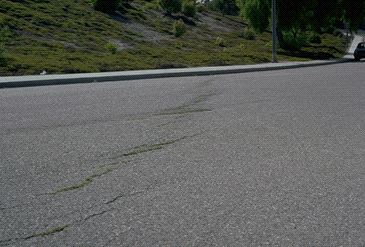
1992 - En echelon shears crossing Gardenia near Ivy
in Fremont.
The Hayward fault can be identified at several locations
crossing the streets in Fremont by the bending and
breakage of curbs along the streets such as this one at
Rocket Drive.
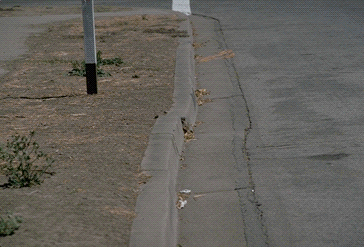
1993 -
Bent and broken
curb at Rocket Drive.
SOUTH
HAYWARD
On
undeveloped hill slopes, the fault trace is marked by
streams that are bent, almost at a right angle by the
right-lateral movement of the fault. Right-lateral means
that the land on the side across the fault moves to your
right. In fact, the movement is primarily on the Bay
side of the fault moving to the north. The stream in the
photograph was originally straight. Thousands of years
of fault slip in large earthquakes and slow fault creep
have moved the stream eighty meters or about 260 feet
northward relative to the opposite side of the fault.
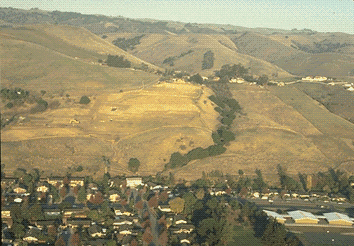
Right-lateral stream offset.
In places,
the Hayward fault can be observed as a line of green
vegetation when the grass on the hills dries out in the
spring. The line of vegetation marks the fault. It
remains green because of seeps and springs formed along
the fault. Seeps and springs form because the rock in
the fault zone has been pulverized by fault movement and
altered to clay. This pulverized rock and clay is called
fault gouge. Gouge, part way up the hillside, forms an
underground dam. Water moving down slope underground,
accumulates against the fault gouge and comes to the
surface as seeps, springs, and ponds.
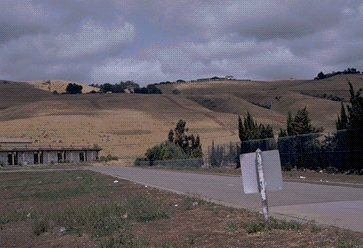
The springs in the photograph are located uphill from
the building
on the left and above the sign in the foreground.
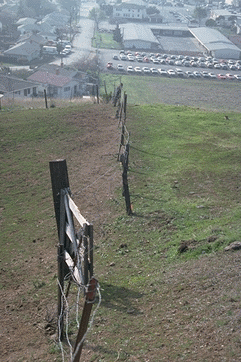
Continuing northward , this old fence at
Holy Sepulchre Cemetery in south Hayward
has been offset by fault creep more than 3 feet
since it was built in the nineteenth century.
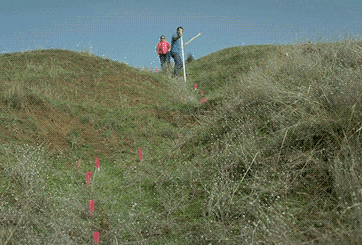
A small gully on the hillslope above has been Holy
Sepulchre
Cemetery has been offset by fault movement nearly 3
meters
(about 6 feet)
as illustrated by the red stakes. This offset
probably
represents
surface displacement in the 1868
Hayward earthquake
and accumulated creep, plus possible
offset in an
unknown fault rupture and earthquake before 1868.